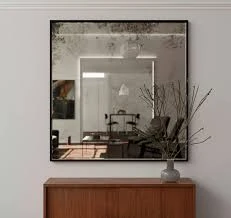

The Benefits of High Solar Gain Low-E Glass in Modern Architecture
As modern architectural designs continue to evolve, the selection of materials plays a crucial role in balancing aesthetic appeal with energy efficiency. One of the standout innovations in glazing technology is high solar gain low-emissivity (Low-E) glass. This specialized glass has gained significant attention in the realm of sustainable building design, offering numerous benefits that align with contemporary environmental goals.
Understanding High Solar Gain Low-E Glass
High solar gain low-E glass is engineered to maximize the amount of solar radiation that enters a building while minimizing the loss of heat. Low-E coatings are ultra-thin layers of metallic oxides that reflect infrared energy while allowing visible light to pass through. The term high solar gain signifies that this type of glass is particularly effective at harnessing solar energy. When sunlight strikes the glass, a large portion is transmitted into the building as usable light and warmth, making it an excellent choice for regions with cooler climates.
Energy Efficiency Advantages
One of the primary advantages of using high solar gain low-E glass is its contribution to energy efficiency. Buildings equipped with this glass can significantly reduce their reliance on artificial lighting during the day. By allowing natural sunlight to penetrate deep into interior spaces, these buildings can benefit from improved illumination without the need for additional energy-consuming lights. This reduction in artificial lighting not only curtails energy costs but also enhances the overall quality of the indoor environment.
Furthermore, high solar gain low-E glass can help maintain comfortable indoor temperatures. In cooler months, the glass captures sunlight and keeps the heat inside, which reduces the demand for heating systems. Conversely, during warmer months, the glass helps manage heat gain, striking a balance that reduces the dependency on air conditioning. As a result, buildings featuring this glass type can achieve significant energy savings year-round.
Environmental Impact

The use of high solar gain low-E glass contributes to the reduction of a building's overall carbon footprint. As energy consumption decreases through more efficient lighting and heating solutions, the demand for fossil fuels is reduced, thereby lowering greenhouse gas emissions. Moreover, the sustainability of the materials used in the production of low-E glass contributes to environmentally friendly building practices.
With the increasing emphasis on eco-friendly construction, many builders are incorporating high solar gain low-E glass into their designs to meet green certification criteria. When integrated into a building's façade, this glazing can earn points toward certifications such as LEED (Leadership in Energy and Environmental Design), further promoting a sustainable approach to architecture.
Aesthetic Versatility
Besides energy efficiency and environmental benefits, high solar gain low-E glass offers considerable aesthetic versatility. Its clarity and reflective properties allow architects and designers to create visually striking buildings that seamlessly integrate with the surrounding environment. The ability to maximize natural light while minimizing glare and heat can elevate the overall ambiance of a space, making it more inviting and comfortable for occupants.
From contemporary office buildings to residential homes, high solar gain low-E glass can be tailored to various architectural styles. Its lightweight nature allows for larger expanses of glass, increasing the connection between indoor and outdoor spaces, while offering unobstructed views. This design flexibility enhances the aesthetic appeal of a building and can elevate its market value.
Conclusion
In conclusion, high solar gain low-E glass represents a significant advancement in glazing technology, offering a wealth of benefits for modern architecture. Its capacity for energy efficiency, coupled with its positive environmental impact and aesthetic versatility, makes it an ideal choice for architects and builders who prioritize sustainable design. As cities continue to grow and the demand for eco-friendly infrastructure increases, high solar gain low-E glass will undoubtedly play a vital role in shaping the future of architectural innovation. By choosing this advanced material, we can help create more sustainable, comfortable, and beautiful spaces for generations to come.